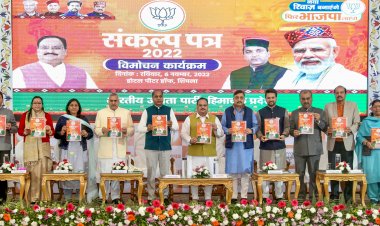Agri-focused NBFCs and Fintech’s plays critical role to augment credit requirement for agricultural innovation
It's time the policymakers support such NBFCs who are charged up to bring radical and profound changes to the formal farm financing. The major challenge these NBFCs are trying to tide over is inclusion under reforms that currently are limited to banks and their Agri credit business

Agriculture is a dominant sector of the Indian economy, with approximately 85 percent of farm holdings being less than 2 ha in size, still producing sufficient food and fiber for our large population of 1.41 billion. In addition, it generates some net export surplus. It would not have been possible without a massive credit infusion to farmers. Access to adequate, timely, low-cost credit from institutional sources is essential, especially for small and marginal farmers. The policymakers have initiated several measures to improve the accessibility of farmers to institutional sources of credit. These policies have emphasized progressive institutionalization for providing timely and adequate credit support to all farmers. Thus, focusing on enabling small and marginal farmers to improve agricultural practices.
Even though the country has taken some proactive steps in heralding reforms in agri-credit to provide financial assistance to the farmer community, it is still behind compared to some neighboring nations. While the volume of credit has improved over the decades, its quality and impact on agriculture have only weakened. Agriculture requires substantial capital commitment, as procurement of equipment remains a significant spend for most farmers. Still, most agricultural credit extended to farmers is of a working capital nature, thus stagnating more than 80 percent of farmers' income.
The analysis of Indian credit demand suggests that even though the banks and other financial institutions are aggressively increasing their reach to the farmer community under priority sector lending, the penetration continues to be low. In this scenario, the Non-Banking Finance Companies (NBFC) sector focusing on Agriculture mechanization has scripted a remarkable success story. It is a testimony to the truly diverse and entrepreneurial spirit of India. From large Agri infrastructure financing to small farmers' microfinance, these NBFCs have innovated over time and found ways to address the debt requirements of the farmer community as a whole. Over time, agri-focused NBFCs / Fintech’s have evolved to be well regulated and, in many instances, adopted best practices in technology, innovation, risk management, and governance. Thus, act as conduits and have furthered the Government's agenda on Financial Inclusion.
The agri-focused NBFCs /Fintech’s can meet the long-term credit needs of the farmers as most of them have high penetration in rural India, and the bulk of their credit disbursements are focused only on small and marginal farmers. Public domain data suggests that only 30 percent of total small and marginal farmers have access to banks and other formal credit channels. Some of the issues faced by banks in providing credit to the farmers are difficulty in reaching far-flung and remote areas and lack of critical technology.
Further, banking activity involving lending to small farmers is plagued by various limitations like higher acquisition and servicing costs for marginal farmers and a greater risk of loan default. There are other problems that banks have faced, like difficulty in gathering farm-level data and getting information such as the cash flow and credit history of farmers. This is where the role of Agri-focused NBFCs /Fintech’s becomes critical. They have leveraged technology to derive essential insights into the farm domain and individual farmers to give out loans seamlessly and fairly. They also quickly offer credit to the farmers through lower paperwork and documentation. Adopting advanced analytics and rural market intelligence helps them bring efficiencies in the lending mechanism and cut the time taken to disburse a loan.
The various purposes for which agri-dedicated NBFCs lend money to the farmer include loans for equipment and machinery, modern and efficient methods of irrigation, and various other components in the value chain of cultivation. They have also brought down the interest rate of loans to as low as 12-18 percent compared to 24-60 percent available in the informal credit system in the vast rural parts of India. The use of modern technology to draw estimates of loan demand, visibility of usage of credit, tracking irrigation facilities, etc., to come up with the exact products and offerings for the farmers are another set of distinct advantages these NBFCs offer.
It's time the policymakers support such NBFCs who are charged up to bring radical and profound changes to the formal farm financing. The major challenge these NBFCs are trying to tide over is inclusion under reforms that currently are limited to banks and their Agri credit business. The policymakers must ensure that agri-focused NBFCs/ Fintech’s are included in effective programs such as the government subsidy schemes, a benefit hitherto available only to the Banks. It will enable them to lend efficiently, and mitigate farmers' credit requirements, thereby supporting their income growth. It will also go a long way in boosting agriculture financing and help India dominate global leadership of the agrarian economy.
(Writer is CEO of Netafim Agricultural Financing Agency Pvt. Ltd)



 Join the RuralVoice whatsapp group
Join the RuralVoice whatsapp group








































